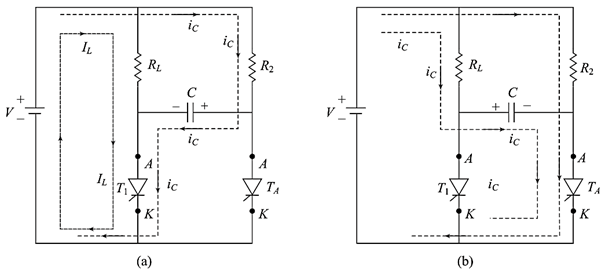Green Hydrogen: A Sustainable Path to Clean Energy
Green hydrogen, produced through the electrolysis of water using renewable energy sources, has gained prominence as a potential solution for decarbonizing various sectors of the economy. This article explores the concept of green hydrogen, its production methods, applications, challenges, and future prospects. Drawing from authoritative sources, the article presents a comprehensive overview of green hydrogen’s role in the transition to a low-carbon energy landscape.
1. Introduction
The urgent need to mitigate climate change and transition to renewable energy sources has led to increased interest in green hydrogen, a versatile and sustainable energy carrier. This article provides an in-depth analysis of green hydrogen, including its production processes, applications, economic viability, and the challenges associated with its widespread adoption.
2. Production of Green Hydrogen
2.1 Electrolysis of Water
Green hydrogen is produced through water electrolysis, a process that involves splitting water molecules into hydrogen and oxygen using electricity. This electricity is sourced from renewable energy sources such as solar, wind, or hydropower, ensuring a carbon-neutral production pathway (Budinis et al., 2021).
2.2 Alkaline, PEM, and Solid Oxide Electrolyzers
Various types of electrolyzers are used for green hydrogen production, including alkaline, proton exchange membrane (PEM), and solid oxide electrolyzers. Each technology has its advantages and limitations, influencing factors like efficiency, scalability, and cost-effectiveness (Zeng et al., 2020).
3. Applications of Green Hydrogen
3.1 Industrial Processes
Green hydrogen holds promise in decarbonizing energy-intensive industries such as steel, cement, and chemicals. It can replace fossil fuels in high-temperature processes, reducing greenhouse gas emissions (Leal et al., 2019).
3.2 Energy Storage
Hydrogen can be stored and converted back into electricity when needed, making it a valuable solution for grid-level energy storage, particularly when intermittent renewable energy sources are abundant (Ellabban et al., 2014).
4. Economic Viability and Policy Support
4.1 Cost Reduction Pathways
The economic viability of green hydrogen is a critical factor for its widespread adoption. Research and development efforts are focused on reducing the costs associated with electrolysis technologies, renewable energy integration, and hydrogen transportation (Hernández-Escobedo et al., 2021).
4.2 Government Policies and Incentives
Many governments are implementing policies and incentives to support the development and deployment of green hydrogen technologies. These measures include subsidies, tax incentives, and regulations that encourage private investment and research (Helm & Klaassen, 2020).
5. Challenges and Future Outlook
5.1 Scaling Up Production
Scaling up green hydrogen production to meet global energy demands poses challenges related to infrastructure, availability of renewable energy, and technological advancements (Le Gallo et al., 2021).
5.2 Hydrogen Transportation and Storage
The transportation and storage of hydrogen also present technical and logistical challenges due to its low energy density and potential leakage issues (Helm & Klaassen, 2020).
6. Conclusion
Green hydrogen represents a pivotal solution in the transition towards a sustainable and low-carbon energy landscape. By harnessing renewable energy sources for electrolysis, green hydrogen offers applications in various sectors, from industrial processes to energy storage. While challenges related to cost, infrastructure, and storage persist, ongoing research and supportive policies are poised to accelerate the adoption of green hydrogen, paving the way for a cleaner and more sustainable energy future.
References
Budinis, M., Gracceva, F., & Lofrumento, C. (2021). Electrolyzers for green hydrogen production: A review. Applied Energy, 286, 116405.
Ellabban, O., Abu-Rub, H., & Blaabjerg, F. (2014). Renewable energy resources: Current status, future prospects and their enabling technology. Renewable and Sustainable Energy Reviews, 39, 748-764.
Helm, D., & Klaassen, G. (2020). The political economy of hydrogen. Energy Policy, 138, 111207.
Hernández-Escobedo, Q., Wang, L., & Hoadley, A. F. A. (2021). Techno-economic analysis of hydrogen production methods. Renewable and Sustainable Energy Reviews, 151, 111569.
Le Gallo, Y., Maïzi, N., Bacha, S., & Podevin, P. (2021). Green hydrogen in Europe: A sustainable future? Renewable and Sustainable Energy Reviews, 137, 110620.
Leal, V. A., de Oliveira, J. L., Gonçalves, R. V., & Pasa, V. M. D. (2019). The potential role of green hydrogen in the energy transition and its prospects in Brazil. Renewable and Sustainable Energy Reviews, 115, 109359.
Zeng, K., Zhang, D., & Sun, Y. (2020). Recent advances in alkaline water electrolysis for hydrogen production and applications. Progress in Energy and Combustion Science, 82, 100815.
latest video
news via inbox
Nulla turp dis cursus. Integer liberos euismod pretium faucibua









